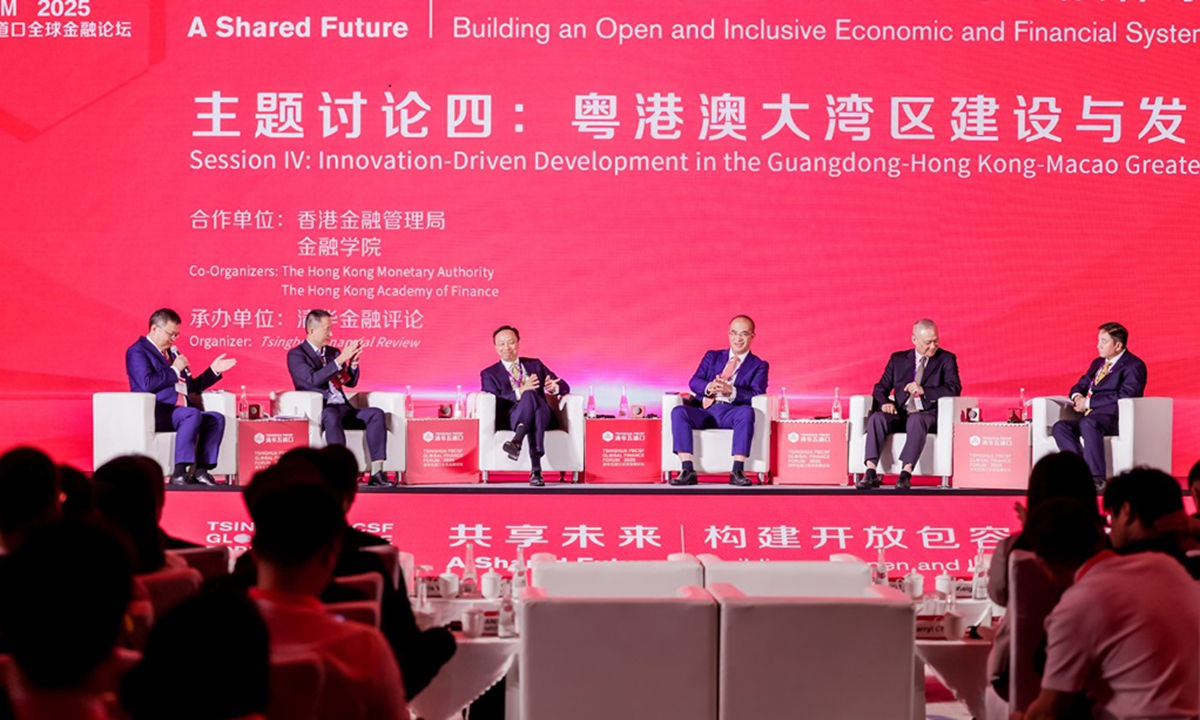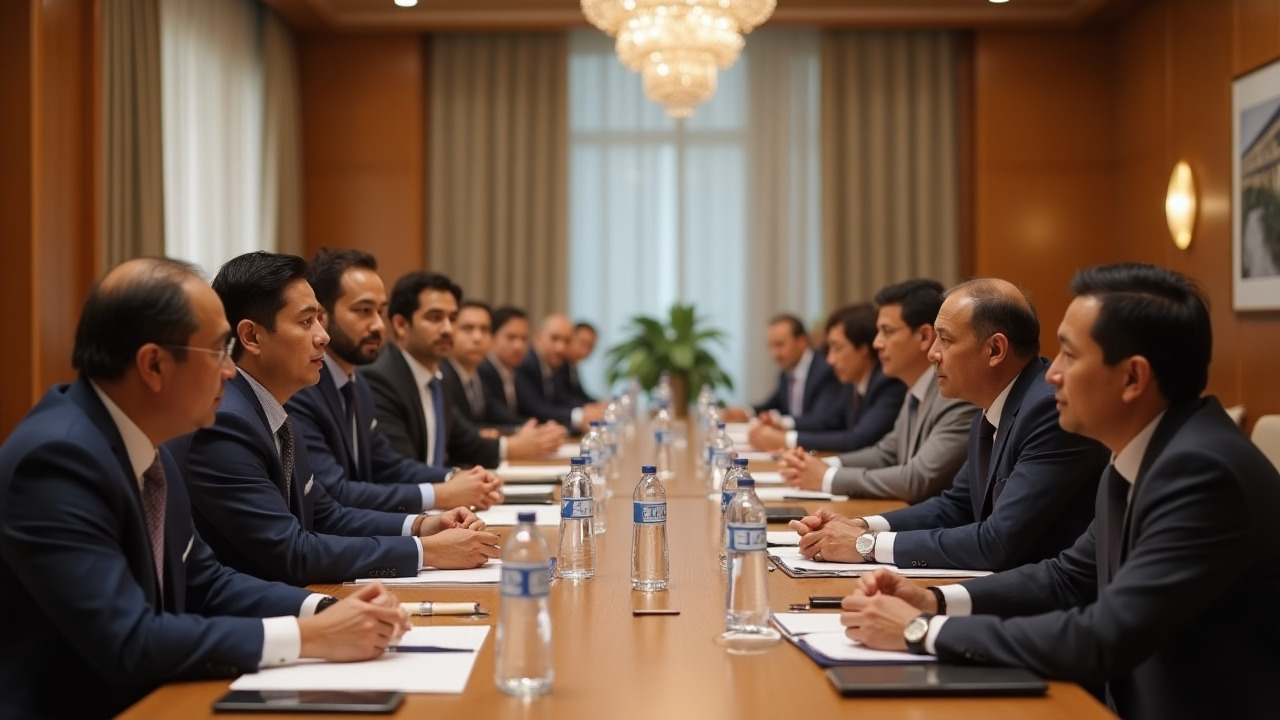China leverages Greater Bay Area to deeper ties with Asian economies amid global uncertainty - Global Times
China leverages Greater Bay Area to deeper ties with Asian economies amid global uncertainty

Photo: Ma Tong/GT
Amid global rising protectionism and mounting external uncertainties, the Guangdong-Hong Kong-Macao Greater Bay Area (GBA) is taking on a renewed strategic role as China's bridge to deeper economic cooperation with Asian economies, experts and business insiders said on Sunday at the 2025 Tsinghua PBCSF Global Finance Forum in Shenzhen, South China's Guangdong Province.
"The GBA should focus on stabilizing ties with Europe and the US, integrating more deeply with East Asia, and expanding Belt and Road Initiative cooperation," said Wang Chunxin, Deputy Head of the Hong Kong Special Administrative Region (HKSAR)'s Chief Executive's Policy Unit.
He noted that East Asia here refers to 16 major economies, including China, Japan, South Korea and ASEAN members. "As of 2021, these economies accounted for more than 30 percent of global GDP, and that share could rise to 40 percent in the next decade or two. The GBA should position itself as a vital bridge to this region," Wang noted.
He noted that the GBA can leverage Hong Kong's institutional strengths and global networks to meet the outbound financing needs of Chinese mainland firms and drive high-level opening-up.
"Financial integration between Shenzhen and Hong Kong has steadily deepened in recent years," said Shi Weigan, Executive Deputy Director General, Office of the Financial Affairs Committee of the CPC Shenzhen Municipal Committee. "Mechanisms such as Stock Connect have expanded into Bond Connect and Wealth Management Connect, attracting investors from more than 130 countries and regions. This has significantly boosted market openness and liquidity on both sides."
Darryl Chan, JP, Deputy Chief Executive of the Hong Kong Monetary Authority, said that Hong Kong is well-positioned to serve as a key platform for Chinese mainland companies going global, offering financing, services and market access. "Many firms, from EV makers to restaurant brands, are choosing Hong Kong as their base for overseas expansion—it remains the most accessible gateway to international markets," he said.
He called for further expansion of southbound channels, including allowing yuan-denominated investments in Hong Kong stocks and broadening institutional participation in Bond Connect, while using the GBA as a pilot zone for wealth management integration.
"Hong Kong is at the forefront of cross-border digital currency pilots, and we'll continue promoting the use of the yuan in real trade to support its internationalization," he said.
In the case of Macao, Zhu Junlin, adviser of the Monetary Authority of Macao, emphasized the city's role as a "precise connector" with Portuguese-speaking countries, helping Chinese enterprises tap into emerging markets. "Through exhibitions, investment promotion and project matchmaking, Macao brings mainland firms abroad and introduces Lusophone businesses to China," he said. "We're not competing with Hong Kong—we complement each other in supporting national economic development."
Li Jiefeng, President of the Hong Kong Small and Medium Listed Companies Association, said that the GBA should boost technological self-reliance, build resilient supply chains and strengthen ties with Asian markets in response to rising geopolitical and supply chain risks. "We need to enhance the GBA's role as a dual-circulation hub by deepening integration with the Chinese mainland market," he said. "At the same time, we should expand trade and investment cooperation with ASEAN and BRICS to offset uncertainties in Western markets."
Lam Lung-on, JP, Member of the 14th National Committee of the Chinese People's Political Consultative Conference President of the Greater Bay Area Importers and Exporters Association told the Global Times on Sunday that GBA firms have shown strong resilience amid US-China trade tensions. In the first four months, the region's mainland cities recorded 5.4 percent trade growth, outpacing the provincial average, driven by tech products and structural upgrades. While the 90-day US tariff reprieve offers a short-term boost, uncertainties remain. Lam urged companies to expand into Belt and Road markets, build overseas warehouses, and strengthen logistics to manage risks.
He added that AI-powered cross-border e-commerce is emerging as a new growth driver, helping firms optimize operations and cut costs. The GBA is actively linking its industrial clusters with digital trade platforms to help more SMEs go global.
Priyadi Hadi Asmoro, Business Risk Analyst and Senior Specialist with Indonesia Eximbank, told the Global Times on Sunday that Shenzhen's main competitive advantage as a gateway to Southeast Asia lies in its proximity to Hong Kong. "Hong Kong has long been a central hub for global trade, so goods flow through it to reach China or other countries. This connectivity is China's biggest strength in this region," he said.
"The new global trade policies force developing countries to adjust their strategies," he said. "They need to diversify their buyer base beyond the US and improve supply chain efficiency. Collaboration between developing countries can help offset lost opportunities in the US market," said Asmoro, who is also a participant of the Tsinghua PBCSF's Global Finance Capacity Building Program for Developing Nations.
"With rising US tariffs, diversification is key," he said. "China is a massive market—one of the top five globally—so deepening ties with China is a logical strategy. Developing countries like Indonesia will likely strengthen collaboration with major economies like China to rebalance trade. Shifting from unilateral to multilateral approaches and adapting to uncertainty is the new reality," he said.












